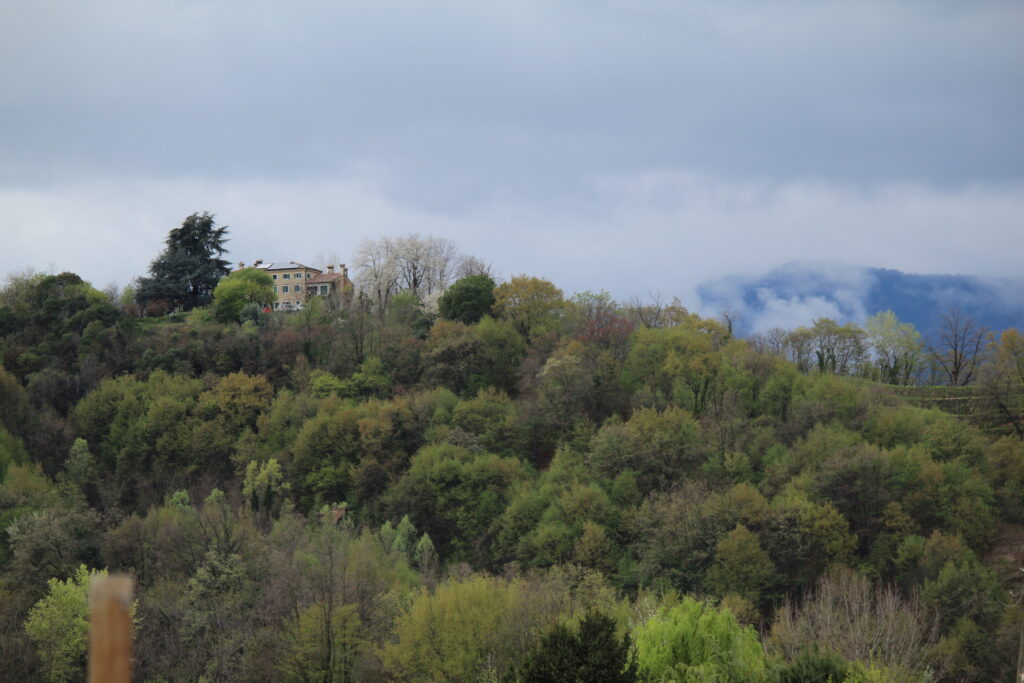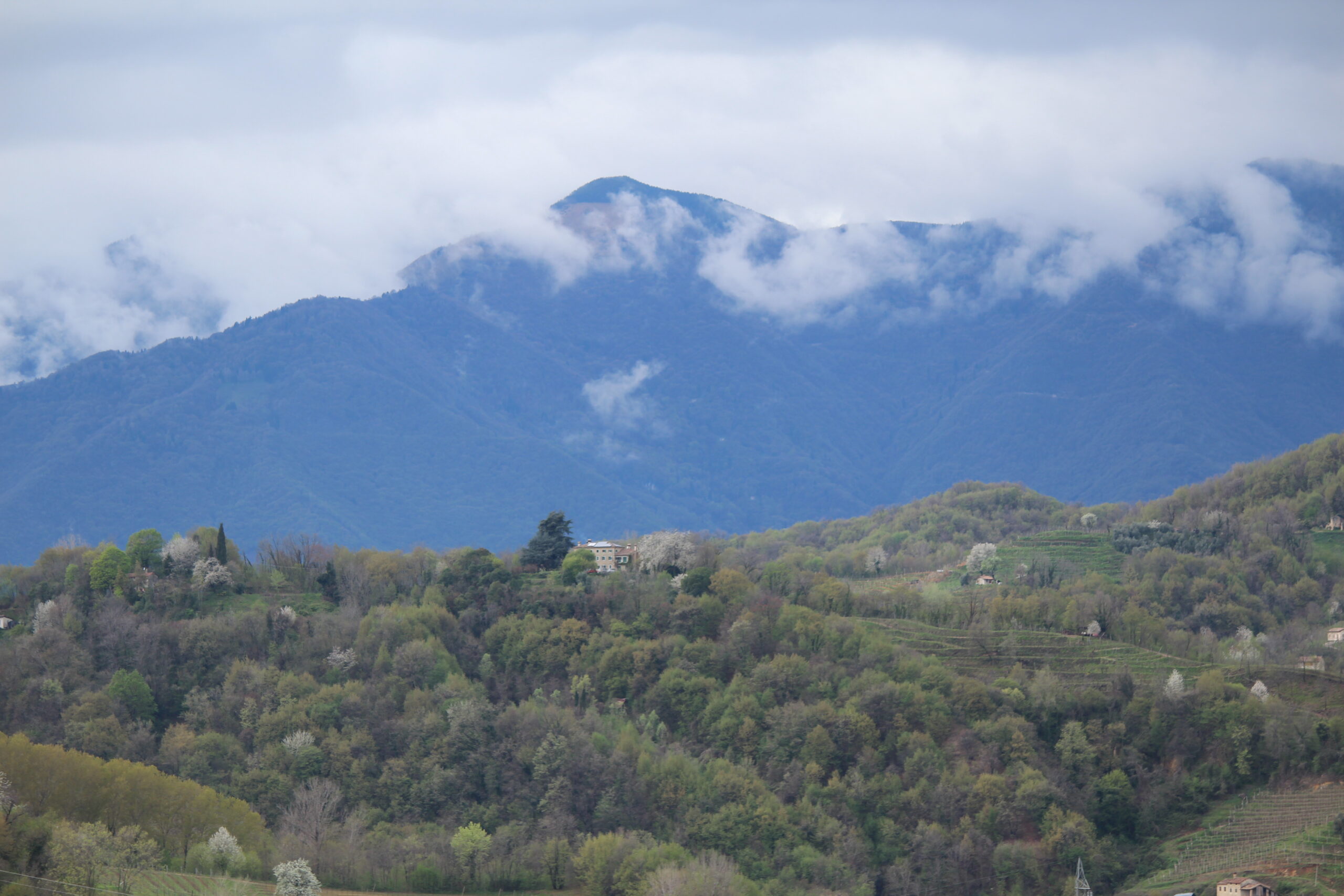IT – English translation below
di Tiziano Tempesta, professore presso il Dipartimento Territorio e Sistemi Agro-Forestali, Università di Padova
Molti credono, o vogliono far credere, che l’inserimento delle colline tra Valdobbiadene e Vittorio Veneto nella lista del patrimonio dell’umanità, dipenda dal fatto che vi viene prodotto il Prosecco, un vino di grande successo esportato in tutto il mondo. In realtà l’unico vero motivo che ha indotto l’UNESCO a iscrivere questa stretta fascia collinare alla lista del World Heritage è la presenza di un paesaggio creato nei secoli dal duro lavoro degli agricoltori che ne hanno modellato i ripidi pendii per poter coltivare la vite. Con grande fatica, ma anche con grande sapienza, i contadini hanno creato un sistema di ciglionamenti che ha consentito di coltivare la vite anche nelle aree più impervie. Il fatto sorprendente è che a sorreggere i terrazzi coltivati non sono muretti a secco, come accade in molte altre parti d’Italia e del mondo, ma pendii inerbiti. Questa sistemazione, che è un piccolo miracolo statico, era funzionale ad un’agricoltura mista basata sull’allevamento, sul vigneto e sul bosco.
L’erba ottenuta nei vigneti consentiva di allevare il bestiame (generalmente pecore) e i getti ottenuti dai boschi cedui fornivano i pali per sostenere le viti. Per integrare questa povera economia contadina, ogni comune disponeva nella parte sommitale dei colli di pascoli comunitari che però nel tempo sono andati via via rimboschendosi.
Noi non sappiamo quando è iniziata questa incredibile opera di costruzione del paesaggio, certo è che, come testimoniato da varie perticazioni di epoca veneziana, il sistema paesaggistico attuale era già presente nella seconda metà del Seicento. Si può supporre che per secoli i contadini abbiano continuato a costruire, anno dopo anno, generazione dopo generazione, questo vasto sistema di ciglioni, questo incredibile paesaggio unico al mondo. A ripensare all’immane fatica di queste persone vengono in mente le parole che Marguerite Yourcenar fa dire all’imperatore Adriano: “Costruire, significa collaborare con la terra, imprimere il segno dell’uomo su un paesaggio che ne resterà modificato per sempre”. Si perché per costruire un paesaggio di tale bellezza è stato necessario collaborare con la terra, senza stravolgerne le leggi, rispettandone gli equilibri. Questo paesaggio non è il frutto di una scuola enologica o della ricerca e della sperimentazione degli atenei, è il risultato della conoscenza acquisita gradualmente nel tempo, di un sapere trasmesso dai padri ai figli, un sapere costruito da tutti e patrimonio di tutti.
Ecco che l’iscrizione alla lista del Patrimonio dell’Umanità è un riconoscimento a coloro che, come Francesca e Rodolfo nella loro piccola azienda, hanno continuato a conservare questo paesaggio, rispettandone le regole senza farsi attrarre dalle sirene delle ruspe che pure hanno stravolto alcuni colli, rendendoli sicuramente più facili da lavorare, più profittevoli dal punto di vista economico, ma enormemente più poveri dal punto di vista culturale e sociale.

EN
by Tiziano Tempesta Professor at Department of Land, Environment, Agriculture and Forestry University of Padova – Italy
Many believe, or want you to believe, the addition of the hills between Valdobbiadene and Vittorio Veneto to the list of UNESCO’s World Heritage sites is to be credited to the Prosecco wine produced in this area and its worldwide success. However, the only real reason why UNESCO added this site to the World Heritage list lies in the panoramic views shaped by centuries of hard work as the farmers forged the area’s steep hills to grow their vines. Through great struggles but also with great wisdom, farmers created an elaborate system of terracing allowing them to farm even the most treacherous sites. Most surprising is the fact that the terracing doesn’t rely on dry stone walls as in most other areas in Italy and across the world but rather on grassy slopes. This arrangement, which by itself is a small achievement, was functional to a mixed environment where sheep farming, vines and forests were intertwined. The grassy slopes provided the necessary feed for the sheep, the forests produced the wooden poles sustaining the vines.
We don’t really know how far back this incredible farming effort goes but we do know from several pieces of evidence that the hills as we see them today were present as early as the seventeenth century. We can only assume farmers have been working on these hills for centuries. Year after year and generation after generation building this world-renowned and incredible site.
The gargantuan struggles these farmers must have overcome, remind us of the words of Marguerite Yourcenar to the emperor Adrian: “Building means collaborating with the soil, imprinting man’s signature on a site that will be forever new”. It’s true, because building such an beautiful site required working in harmony with the soil, without violating its laws and in full respect of its balance. These views don’t come from an enological school or the result of academic studies. They come from the knowledge that comes gradually with time, the wisdom that grows from one generation to the next. It is the local people’s heritage.
From this you can see how the addition to the World Heritage list is in recognition to the efforts of those like Francesca and Rodolfo who, producing the organic prosecco LUNATICO in their small wineyard , carry forward the conservation of these sites, in full respect of the environment and without falling to the lures of the bulldozers which have ravaged some hills nearby rendering them easier to farm, more profitable, but also poorer and devoid of the culture and social value of this site.

